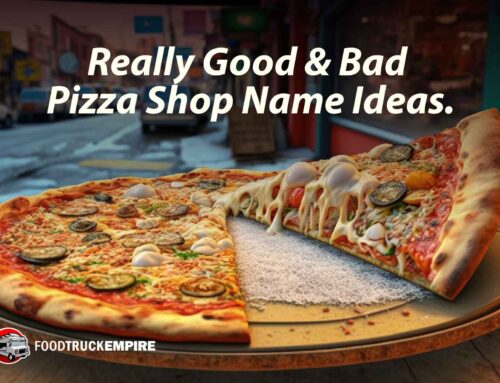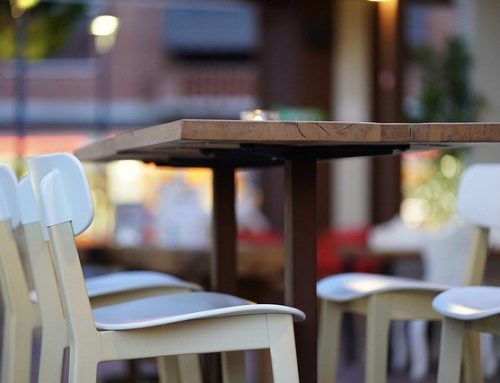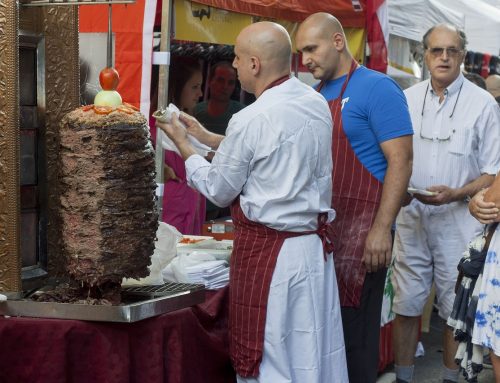When I decided to make the leap from my seasonal food truck into a year-round brick-and-mortar takeout restaurant location, I had no idea how I was going to pay for any of it.
My chef friends had already filled my head with horror stories about the amount of money they spent (and eventually lost) opening their own restaurants, either through personal financing done mostly on credit cards, or through partnerships with unscrupulous investor-types.
Even in coastal Maine, where I live, the cost to lease and open a restaurant, even one which the realtor describes as “turnkey,” can quickly spiral into the $50,000 – $200,000 range remodel, making the entire endeavor out of reach for most people.
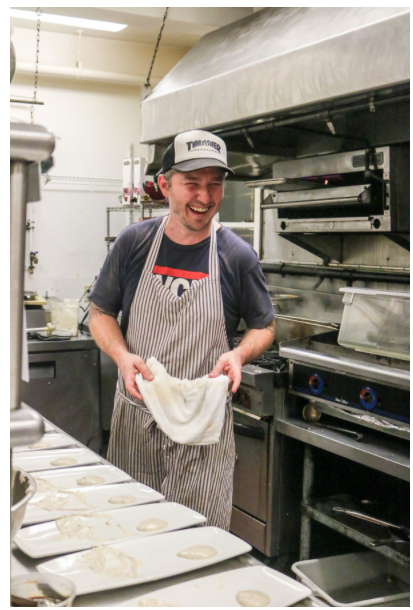
With only a few thousand dollars to work with, and a rapidly-dwindling summer season already underway, I knew I would have to cut every possible corner, in order to get the doors open in time to catch the tail end of the tourist season. I spent just $8,000, from the time I signed the lease to the day I opened the doors. Here’s how I did it.
Leverage Your Own Know how and Sweat Equity.

When I was growing up, my dad had an enormous set of Time Life books, that would supposedly teach you everything from basic electrical wiring to laying kitchen tile to clawfoot bathtub installations. He used those books as a resource for gutting and renovating the entire house, and what he didn’t know how to do, he learned by reading.
Nowadays, we have it even easier; if you can think of a task, there’s probably a detailed YouTube video or Instructable showing you step-by-step how to accomplish it.
I was fortunate that the space I was leasing was mostly structurally sound; I just wanted to make a few updates to freshen up the space and make it my own. This meant painting the trim, walls, and ceiling of my new space, which was a task I was comfortable doing myself.
Related Reading: Should You Sell Branded T-Shirts at Your Restaurant? Why I Decided To.
When it came to the floors, I thought a quick coat of paint would help bring the wide pine planks back to life, which I had never done. So I went to my local home improvement store, and got advice on which floor sander to rent. Then I went to the paint department, and learned about the different types of paint available for floors, including one with a polyurethane additive that should help prevent wear and tear. Then I watched a YouTube video to learn how to do it.
Here’s a cool little video we did to document part of our restaurant build out:
I wanted to hang a couple of pendant lights in one of the corners, but I’m no electrician, and the sensation of getting electrocuted is one of my least favorite things. Instead of hiring an electrician, I bought inexpensive metal conduit and ran it up one wall, to hide the cords from the pendant lights and make them look a little more custom, with the plugs terminating in a $4 timer in a regular electrical outlet.
What’s the lesson? Hiring any of these jobs out to the professionals would have cost me hundreds or even thousands of dollars. Figure out what you can do by yourself, with an investment of only your time, and you’ll not only save money…you’ll feel personally connected to the space in a way that you otherwise might not, if the work was just done for you.
No Budget for Design? Paint.
When you’re planning your restaurant design, you may take a quick cruise through Pinterest for inspiration, where you’ll find tons of whitewashed exposed brick, enviable and dramatic lighting designs, and entire sculptural art installations made out of reclaimed wood. But when you’re on a budget, it can be tough to figure out how to give your space personality, without breaking the bank.
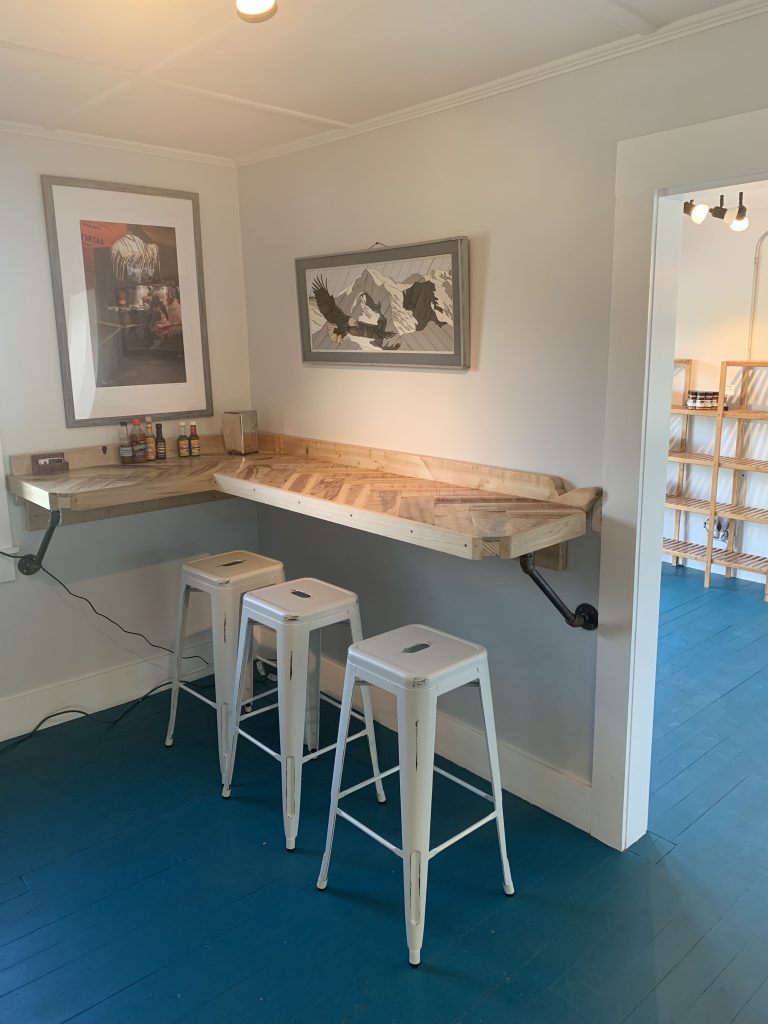
In our case, we decided to use a few cans of paint to do the heavy lifting of our design work for us. In our new restaurant, we painted the walls a very cool, neutral grey that is bright and feels spotlessly clean, while calling attention to the antique wood trim and ceiling features of our historic space.
But the floors are a design element all their own; instead of going with a neutral color, we crossed our fingers and chose “Gypsy Teal,” a bold, blue-green hue that really pops and makes a statement. Before there was even a single piece of art hung or piece of furniture brought in, the space immediately had personality and a unique charm, for just the cost of a few cans of paint.
Use Garage Sales and Local Artists to Decorate Your Space.
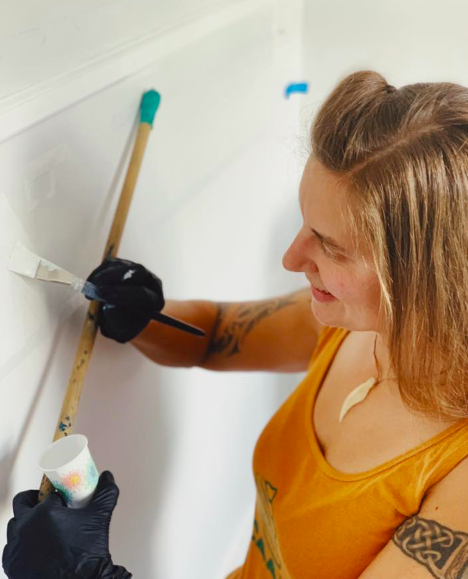
After the paint has dried, it’s hard not to notice the expanse of bare wall that’s stretching through your dining room. Figuring out what you want to display can be difficult, and figuring out how to pay for all of that new art can be challenging.
Because my restaurant features a lot of Mexican-inspired flavors, I started with a few enlargements of photos I had taken during my travels in Mexico. I chose photos that reflected the vibe I was going for; funky taquerias lit only by streetlights, or little kids enjoying a heaping pile of tacos al pastor.
I augmented my collection with a couple of random finds from Facebook Marketplace: A gigantic wooden mosaic of an eagle in flight that someone’s grandmother had made 40 years ago, and an honest-to-goodness 24×36 inch acrylic painting of either Elvis Presley, or possibly James Dean, or some kind of Presley/Dean hybrid. It doesn’t matter. It’s amazing, it’s one-of-a-kind, and it fills a lot of wall for $20 bucks.
You can also tap local artists you love who may be looking for attention for their work. Offer to display their artwork in your dining room or waiting area. Some of it may even sell, in which case, you’re not only scoring beautiful, ever-changing artwork for free, you’re helping another struggling artist pay the bills.
Don’t Be Afraid to Call in Favors.
Take a run through your mental “friends list,” and you’ll probably find that there is thousands and thousands of dollars worth of untapped talent at your fingertips. Most people will be happy to help you get your new venture off the ground, and many bring unique skills to the table that would otherwise cost you a fortune.
When it came time to hang a sign in front of my restaurant, I called in my friend Shelly, who is an accomplished sign painter. We found a piece of old cherry butcherblock countertop from the local architectural salvage store, and Shelly went to work crafting us a masterpiece that would have otherwise been out of reach financially. In exchange? Shelly eats for free at my restaurant for the rest of her natural life. It’s a more than fair exchange.
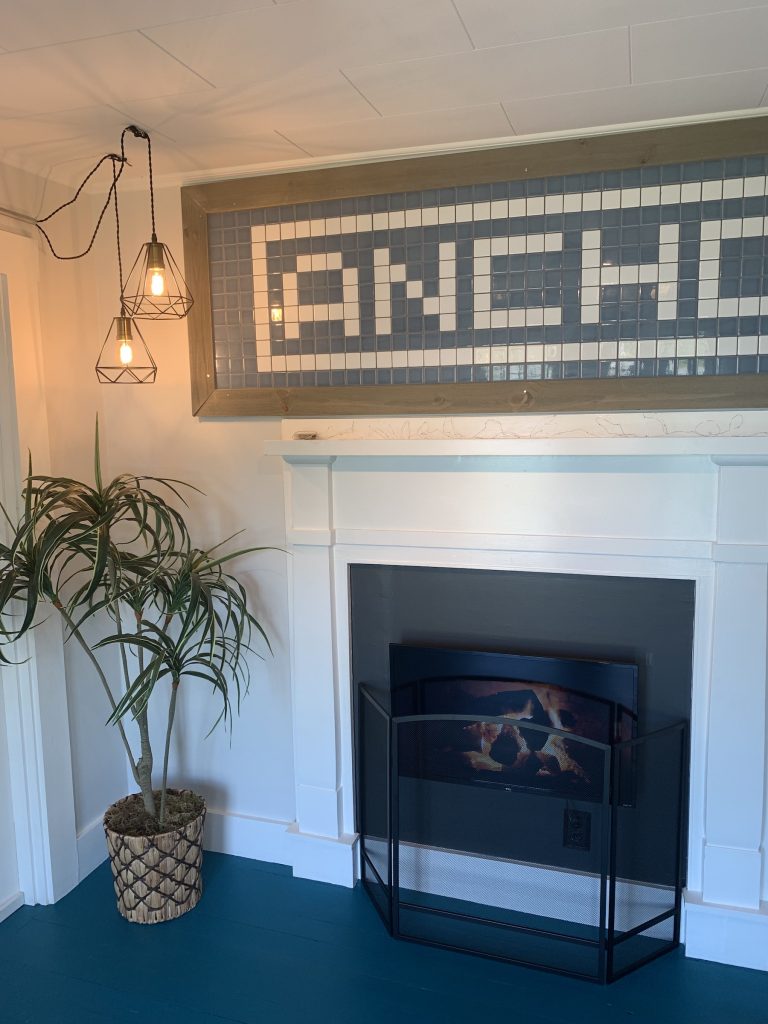
If you think about all of the people you know, there are probably artists, painters, electricians, carpenters, or plumbers in the mix, all of whom would be likely willing to help you realize your dream, at either a deep discount or for free. Don’t be afraid to reach out and ask.
Design Your Menu for the Kitchen, and Not the Other Way Around
Here’s the thing about outfitting a kitchen with all of the stuff you need to prepare and serve the menu of your dreams: You can spend literally any amount of money. In fact, you’ll probably spend whatever money you have.
If you have $100,000 to play around with, you’ll spring for the multi-station cooktops, the wood-fired pizza oven, the live lobster tanks, and one of those crazy Argentinian grills that raises and lowers over an open flame. On the other hand, if you’ve got $500 to spend, you’ll probably buy a hot plate and a microwave.
Instead of spending the money you need to execute your ideal menu, consider designing the menu around what you have, instead. There are plenty of signature dishes I would love to be serving at my restaurant; but the fact is, until I have deep fryers and an exhaust system, they’re not feasible.
Rather than spend tens of thousands of dollars installing them, I’m starting with some things I CAN cook, using the kitchen I have, until cashflow improves.
If the business warrants dropping some money on some new equipment, and eventually rolling out my dream menu? Fine. But there’s no reason to do that, before there’s money coming in. Try working with what you have, rather than spending a fortune making what you want.
Buy Chinese Products on Amazon.
Buy Chinese! It’s not a refrain you hear very often, but in our case, it can be a great way to save money. Two examples:
The restaurant supply company I use sells dining room furniture, and I had my eye on a few metal, rustic farmhouse-style stools that would fit with my design perfectly. The problem was that they were $100 EACH, which was a tough area in which to justify spending money.
I found Chinese-manufactured copies on Amazon for $100…for a set of four. Sure, they’re probably not going to stand up to the level of wear and tear that the more expensive restaurant-grade versions would, but I don’t care about making a long-term investment in stools. I just want people to have a place to sit down, on day one.
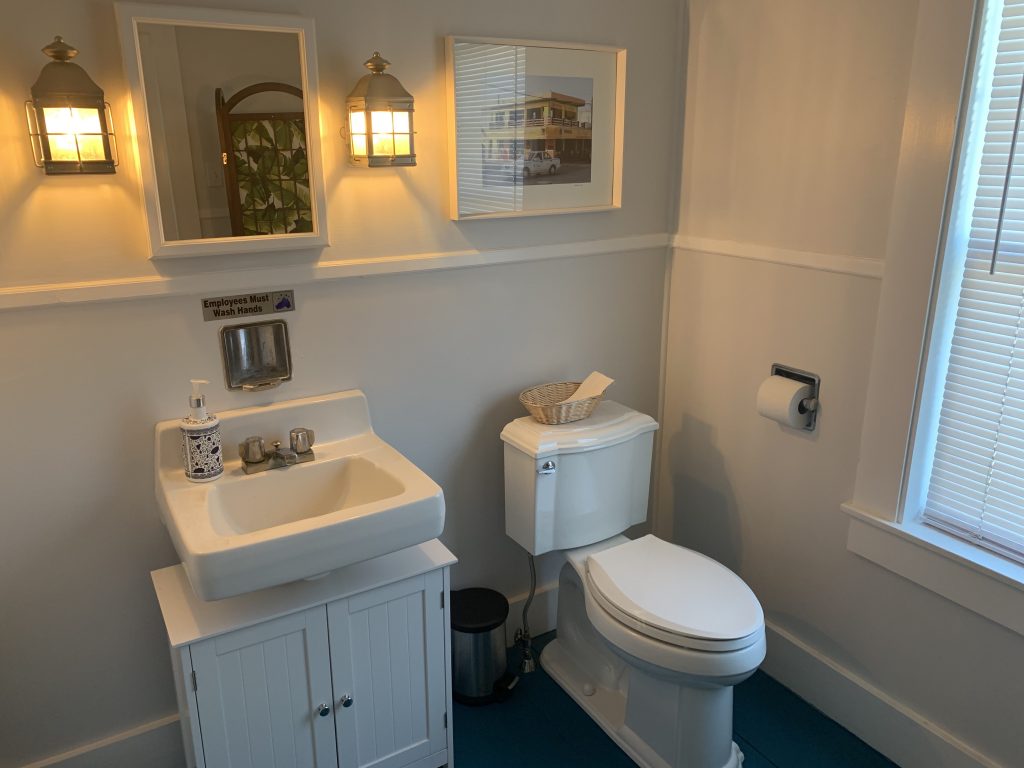
Where else has the wonder of Chinese manufacturing come to the rescue? Our bathroom had a horrible, grammar-school-style wall mounted sink, with lots of corroded, exposed plumbing hanging from the bottom. A $49 base cabinet from Amazon saved the day.
Sure, the back of the cabinet didn’t fit the layout of the pipes, but that’s what jigsaws are for, and when it’s full of backup rolls of toilet paper and other assorted toiletries, no one would ever know that it looks like a rabid beaver high on crystal meth hacked away at the back.
Would hiring a plumber to reroute the sink plumbing have been a better choice? Or buying a whole new sink and vanity setup? Maybe, but it also would have cost me ten times as much.
Use an Online Restaurant Supply Company for Your Initial Purchases.
Figuring out how to stock your shelves with your initial inventory can be a daunting task, and local restaurant supply stores or bulk membership stores may not have the best possible prices. Pare down your list to the minimum things you need to launch your service, and consider purchasing them from an online supply store, who can often compete on prices and may offer additional bonuses, like payment terms (even for new businesses) or free shipping.
Know When It’s Okay to Do Without.
When you’re daydreaming about your new restaurant, or even making your first tentative explorations of the space, you’re probably starting a mental catalog of all the things you simply have to have for opening day. In my case, the entryway to my restaurant contains a very large, decommissioned fireplace that someone boarded up years ago, likely for insurance reasons.
I had an idea early on to paint it like a real fireplace, and install a television screen to play a looping video of a roaring fire. (We’re a classy joint.) I wanted that TV so badly, but spending even that $150 before I’d had a chance to serve even one meal didn’t make any sense, and so I forced myself to spend the limited amount of money on things I absolutely NEEDED for day one, like plates and bread.
Would the TV fireplace have been cool to have on opening day? Probably. But it wasn’t crucial to service.
We opened our doors with a lot of stuff on our “to buy” list. For example, I think it was about two weeks before we had paper towels in the bathroom. To this day, if a customer asks for a bag to carry home their takeout stuff, we don’t have one to give them. Would I like to be able to provide these conveniences? Of course. Do I need them in order to sell food? Nope.
In a new venture, most customers are very patient and understanding. When cash flow improves, I’ll revisit my “to buy” list, and evaluate what the changes in the business’ needs mean for my bottom line.
Above all, don’t spend money you don’t have, on things you don’t need.

